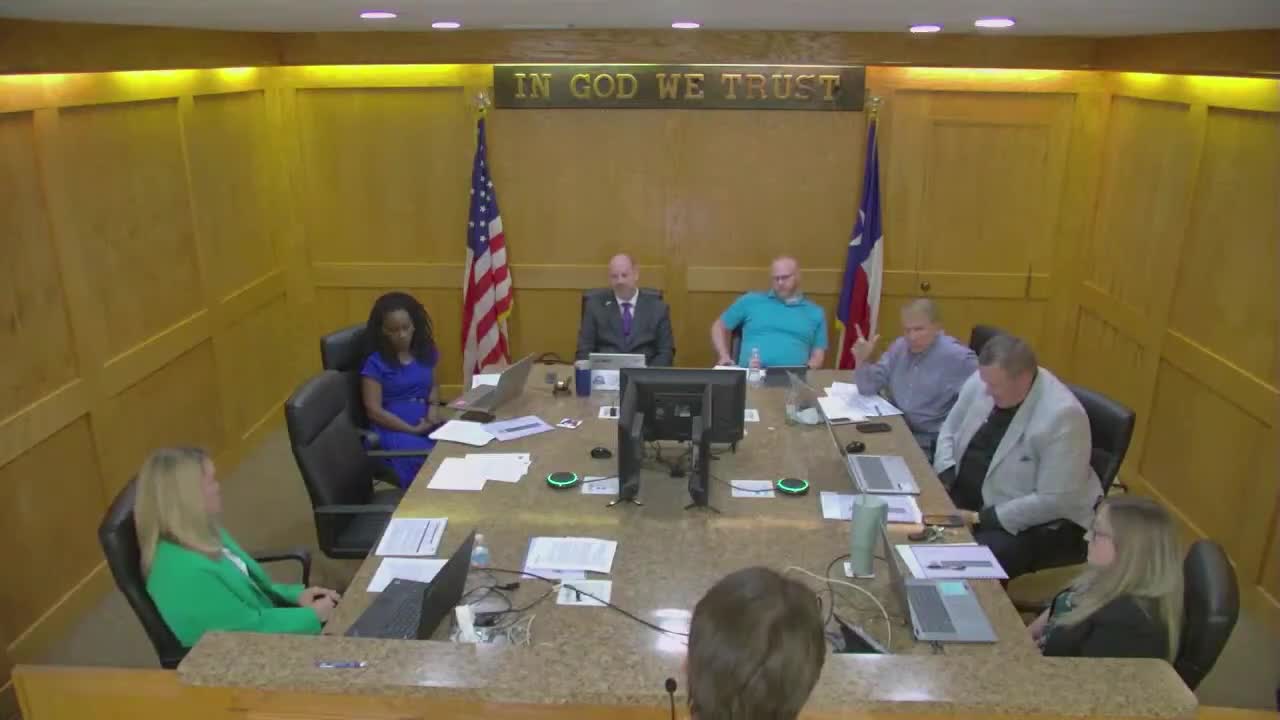City Council discusses maintaining 29¢ tax rate amid growth and new projects
May 28, 2025 | Whitehouse, Smith County, Texas
This article was created by AI summarizing key points discussed. AI makes mistakes, so for full details and context, please refer to the video of the full meeting. Please report any errors so we can fix them. Report an error »

The City Council of Whitehouse, Texas, convened on May 27, 2025, to discuss key financial strategies and community developments aimed at maintaining fiscal stability while enhancing local infrastructure. The meeting focused on the city's debt service tax rate and its implications for taxpayers.
The council began by addressing the current debt service tax rate, which stands at 29 cents. Officials emphasized their commitment to keeping this rate unchanged, even as the city plans for significant projects, including a new fire station, renovations to City Hall, and improvements to local parks. This approach aims to ensure that taxpayers will not face any additional tax burdens as these developments unfold.
Council members highlighted the importance of conservative financial modeling, projecting a growth rate of 5% that may adjust to 3% in less favorable years. This strategy is designed to maintain a healthy fund balance, allowing the city to manage its debt service effectively without impacting the tax rates for residents.
Discussions also touched on the relationship between property tax growth and population growth. While population increases can contribute to tax revenue, the council noted that attracting commercial growth is crucial for minimizing the tax impact on existing residential taxpayers. The Economic Development Corporation (EDC) is actively working to foster this commercial growth, which is seen as vital for job creation and overall economic health.
Additionally, the council reminded attendees that residential homesteads are capped at a 10% growth rate annually, which helps stabilize property tax valuations for homeowners. Recent changes to exemptions for senior citizens were also acknowledged, reflecting the city's ongoing efforts to support its aging population.
In conclusion, the meeting underscored the city's proactive approach to financial management and community development, with a clear focus on maintaining tax rates while enhancing public services and infrastructure. The council's strategies aim to balance growth with fiscal responsibility, ensuring that Whitehouse remains a desirable place to live and work.
The council began by addressing the current debt service tax rate, which stands at 29 cents. Officials emphasized their commitment to keeping this rate unchanged, even as the city plans for significant projects, including a new fire station, renovations to City Hall, and improvements to local parks. This approach aims to ensure that taxpayers will not face any additional tax burdens as these developments unfold.
Council members highlighted the importance of conservative financial modeling, projecting a growth rate of 5% that may adjust to 3% in less favorable years. This strategy is designed to maintain a healthy fund balance, allowing the city to manage its debt service effectively without impacting the tax rates for residents.
Discussions also touched on the relationship between property tax growth and population growth. While population increases can contribute to tax revenue, the council noted that attracting commercial growth is crucial for minimizing the tax impact on existing residential taxpayers. The Economic Development Corporation (EDC) is actively working to foster this commercial growth, which is seen as vital for job creation and overall economic health.
Additionally, the council reminded attendees that residential homesteads are capped at a 10% growth rate annually, which helps stabilize property tax valuations for homeowners. Recent changes to exemptions for senior citizens were also acknowledged, reflecting the city's ongoing efforts to support its aging population.
In conclusion, the meeting underscored the city's proactive approach to financial management and community development, with a clear focus on maintaining tax rates while enhancing public services and infrastructure. The council's strategies aim to balance growth with fiscal responsibility, ensuring that Whitehouse remains a desirable place to live and work.
View full meeting
This article is based on a recent meeting—watch the full video and explore the complete transcript for deeper insights into the discussion.
View full meeting
